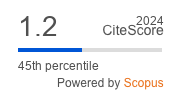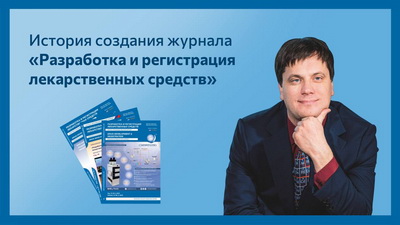ТОКСИКОЛОГИЧЕСКИЕ И ФАРМАКОЛОГИЧЕСКИЕ ХАРАКТЕРИСТИКИ ВСПОМОГАТЕЛЬНЫХ ВЕЩЕСТВ ПРЕПАРАТОВ ТОРАСЕМИДА
Аннотация
Ключевые слова
Об авторах
Д. Ю. ИвкинРоссия
А. А. Теслев
Россия
А. С. Дзюба
Россия
А. С. Ивкина
Россия
Список литературы
1. А.И. Тенцова, О.И. Терёшкина, И.П. Рудакова. Современные биофармацевтические аспекты вспомогательных веществ // Фармация. 2012. № 7. С. 3-6.
2. М.М. Миронова, Е.Л. Ковалева. Требования к производству вспомогательных веществ, используемых в составе лекарственных средств (обзор) // Химико-фармацевтический журнал. 2015. Т. 49. № 5. С. 52-56.
3. А.П. Мешковский. Обеспечение качества фармацевтических субстанций за рубежом - сегодня и завтра // Фарматека. 2000. № 1. С. 29-34.
4. Н.Б. Демина. Биофармация - путь к созданию инновационных лекарственных средств // Разработка и регистрация лекарственных средств. 2013. № 1. С. 8-13.
5. G. Pifferi, P. Restani. The safety of pharmaceutical excipients // Farmaco. 2003. № 58(8). P. 541-550.
6. C. Freeman et al. Subchronic and Developmental Toxicity Studies in Rats with Ac-Di-Sol Croscarmellose Sodium // International Journal of Toxicology. 2003. V. 22. P. 149-157.
7. M. Weiner, L.A. Kotkoskie, C. Freeman, K.J. Batt, M.J. Fletcher. Acute toxicity evaluation of Ac-Di-Sol and Avicel PH, Avicel RC and CL: pharmaceutical excipients // Toxicol Lett (Suppl). 1992. V. 243.
8. U.S. United States Food and Drug Administration (U.S. FDA). Good laboratory practice regulations; final rule. 21 CFR Part 58. - Washington, DC: U.S. FDA. 1987.
9. E.M. Baker. Microcrystalline cellulose: oral administration. - Rats. Unpublished report from Fitzsimmons General Hospital (Submitted to WHO by FMC Corporation). 1966.
10. L.A. Kotkoskie, M.T. Butt, E. Selinger, C. Freeman, M.L. Weiner. Qualitative investigation of uptake of fine particle size microcrystalline cellulose following oral administration in rats // J. Anat. 1996. V. 189. P. 531-535.
11. E.M. Baker. Microcrystalline cellulose: oral administration. - Humans. Unpublished report from Fitzsimmons General Hospital. 1968.
12. M.P. Walters, J. Kelleher, J.M. Findlay, S.T. Srinivasan. Preparation and characterisation of a [14C] cellulose suitable for human metabolic studies // Br. J. Nutr. 1989. V. 62. P. 121-129.
13. T.W. Tusing, O.E. Paynter, O.A. Battista. Birefringence of plant fibrous cellulose and microcrystalline cellulose in human stools freezer-stored immediately after evacuation // Agric. Food Chem. 1964. № 12(3). P. 284-287.
14. G. Volkheimer, F.H. Schultz, H. Lehmann, I. Aurich, R. Hubner, M. Hubner, A. Hallmayer, H. Munch, H. Opperman, S. Strauch. Primary portal transport of persorbed starch granules from the intestinal wall // Med. Exp. 1968. V. 18. P. 103-108.
15. CanTox Inc. Estimated consumption of microcrystalline cellulose and sodium carboxymethylcellulose from current and proposed food use of Avicel cellulose gel. Unpublished report dated December 1993, prepared by CanTox Inc. for FMC Corporation (Submitted to WHO by FMC Europe N.V.). 1993.
16. S.K. Egan, J.T. Heimbach, Microcrystalline cellulose, MCC, E460(i). Part four: Exposure data - Estimated intake of MCC in the United Kingdom. Unpublished report dated April 11, 1994, prepared by TAS, Inc., Washington, DC, USA for FMC Corporation (Submitted to WHO by FMC Europe N.V). 1994.
17. G. Pahlke, R. Friedrich. Persorption of microcrystalline cellulose // Naturwissenschaften. 1974. V. 61. P. 35.
18. J.H. Eldridge, R.M. Gilley, J.K. Staas, Z. Moldoveanu, J.A. Meulbroek, T.R. Tice. Biodegradable microspheres: vaccine delivery system for oral immunization // Curr. Top. Microbiol. Imunol. 1989. V. 146. P. 59-66.
19. A.J. Pallotta. Acute oral administration - Rats; and acute intraperitoneal administration - Rats, of microcrystalline cellulose. Unpublished report from Hazleton Labs, Inc. (Submitted to WHO by FMC Corporation). 1959.
20. C. Freeman. Avicel RCN-15. Acute oral toxicity study in rats. Unpublished report No. I91-1217 from FMC Corporation Toxicology Laboratory, Princeton, New Jersey, USA (Submitted to WHO by FMC Europe N.V.). 1991a.
21. C. Freeman. Avicel AC-815. Acute oral toxicity study in rats Unpublished report No. I95-2040 from FMC Corporation Toxicology Laboratory, Princeton, New Jersey, USA (Submitted to WHO by FMC Europe. 1996d.
22. C. Freeman. Avicel AC-815. Acute dermal toxicity study in rats. Unpublished report No. I95-2041 from FMC Corporation Toxicology Laboratory, Princeton, New Jersey, USA (Submitted to WHO by FMC Europe N.V.). 1996e.
23. C. Freeman. Avicel RCN-15. Acute dermal toxicity study in rats. Unpublished report No. I91-1219 from FMC Corporation Toxicology Laboratory, Princeton, New Jersey, USA (Submitted to WHO by FMC Europe N.V.). 1991b.
24. J. Signorin. Avicel AC-815. Acute inhalation study in rats. Unpublished report No. I95-2045 by FMC Corporation Toxicology Laboratory, Princeton, New Jersey, USA (Submitted to WHO by FMC Europe N.V.). 1996.
25. J.W. Frey, E.R. Harding, T.R. Helmbold. Dietetic investigations of edible pure cellulose // Med. J. Rec. 1928. V. 127. P. 585-589.
26. Asahi Chemical Industry Co. Effect of ingestion of avicel-contained foods on living organisms. Unpublished report from Yoshitoshi Internal Seminar (Submitted to WHO by Asahi Chemical Industry Co., Ltd). 1966.
27. Hazleton Labs. Long-term nutritional balance study - Rats. Unpublished report from Hazleton Labs, Inc. (Submitted to WHO by FMC Corporation). 1963.
28. Hazleton Labs Microcrystalline cellulose: reproduction study - Rats. Unpublished report from Hazleton Labs, Inc. (Submitted to WHO by FMC Corporation). 1964.
29. K.J. Batt. Avicel RCN-15 - Salmonella mammalian microsome plate incorporation assay (Ames test). Unpublished report No. I91-1214 from FMC Corporation Toxicology Laboratory, Princeton, New Jersey, USA. 1992.
30. M.A. Cifone. Mutagenicity test on Avicel RCN-15 in the L5178Y TK+/- mouse lymphoma forward mutation assay with an independent repeat. Unpublished report by Hazleton Washington Inc., Vienna. Virginia, USA (FMC Study No. 191-1230). 1992.
31. M.A. Cifone. Mutagenicity test on Avicel CL-611, E329N in the L5178Y TK+/- mouse lymphoma forward mutation assay with a confirmatory assay. Unpublished report by Hazleton Washington Inc., Vienna,Virginia, USA (FMC Study No. 194-1834). 1994.
32. T.E. Lawlor. Mutagenicity test with Avicel AC-815 in the Salmonella-Escherichia coli/mammalian microsome reverse mutation assay with a confirmatory assay. Unpublished report by Corning Hazleton Inc., Vienna, Virginia, USA (FMC Study No. I95-2047). 1996.
33. M.E. McKeon. Genotoxicity test on Avicel RCN-15 in the assay for unscheduled DNA synthesis in rat liver primary cell cultures with a confirmatory assay. Unpublished report by Hazleton Washington Inc., Kensington, Maryland, USA (FMC Study No. I91-1229). 1992.
34. H. Murli. Mutagenicity test on Avicel RCN-15 in vivo micronucleus assay. Unpublished report by Hazleton Washington Inc., Kensington, Maryland, USA ( FMC Study No. I91-1228). 1992.
35. H. Murli. Mutagenicity test on Avicel pH101 Pharmaceutical in an in vivo mouse micronucleus assay. Unpublished report by Hazleton Washington, Inc., Vienna, Virginia, USA (FMC Study No. I94-1837). 1994a.
36. H. Murli. Mutagenicity test on Avicel CL-611 in an in vivo mouse micronucleus assay. Unpublished report by Hazleton Washington, Inc., Vienna, Virginia, USA (FMC Study No. I94-1835). 1994b.
37. D. Sondergaard, O. Meyer, G. Würtzen. Magnesium stearate given perorally to rats. A short term study // Toxicology. 1980. № 17(1). P. 51-55.
38. E. Boyland, E.R. Busby, C.E. Dukes, P.L. Grover, D. Manson. Further experiments on implantation of materials into the urinary bladder of mice // Br J Cancer. 1964. V. 13. P. 575-581.
39. Z.T. Chowhan, W.L. Paul, L.T. Grady. Harmonization of Excipient Standards and Test Methods: Challenges and Progress // Pharma Tech. 1994. № 18(6). P. 78-96.
40. Final Report of the Safety Assessment of Lithium Stearate, Aluminum Distearate, Aluminum Stearate, Aluminum Tristearate, Ammonium Stearate, Calcium Stearate, Magnesium Stearate, Potassium Stearate, Sodium Stearate, and Zinc Stearate/International Journal of Toxicology. Published January 1, 1990.
41. American Conference of Governmental Industrial Hygienists TLVs and BEIs. Threshold Limit Values for Chemical Substances and Physical Agents and Biological Exposure Indices. Cincinnati, OH, 2008.P. 52.
42. CFR 184.1440; U.S. National Archives and Records Administration’s Electronic Code of Federal Regulations. Available from, as of October 22, 2002. URL: http://www.gpoaccess.gov/ecfr/ (дата обращения 19.08.2011).
43. R.H. Dave. Overview of pharmaceutical excipients used in tablets and capsules. Drug Topics (online). Advanstar. 10/24/2008. URL: http://drugtopics.modernmedicine.com/drugtopics/Top+News/Overview-of-pharmaceutical.-excipients-used-in-tabl/ArticleStandard/Article/detail/561047. (дата обращения 19.08.2011).
44. D.A Bender. Starch, Pregelatinized. A Dictionary of Food and Nutrition. 2005. Retrieved March 19, 2012. URL: http://www.encyclopedia.com/doc/1O39-starchpregelatinized.html (дата обращения 19.08.2011).
45. FDA’s SCOGS database; Wheat Starch; SCOGS-Report Number: 115; URL: http://www.accessdata.fda.gov/scripts/fcn/fcnDetailNavigation.cfm?rpt=scogsListing&id=365 (дата обращения 19.03.2012).
46. D.B. Le Corre, J. Bras, A. Dufresne. Starch Nanoparticles: A Review // Biomacromolecules. 2010. № 11(5). P. 1139-1153.
47. М.В. Ходжава, Н.Б. Дёмина, С.А. Скатков, В.А. Кеменова. Влияние скользящих веществ на качество таблетированных лекарственных средств // Фармация. 2011. № 7. С. 31-34.
48. Y. Kim et al. Toxicity of colloidal silica nanoparticles administered orally for 90 days in rats // International Journal of Nanomedicine. 2014. № 9 (Suppl 2). P. 67-78.
49. C. Fu, T. Liu, L. Li, H. Liu, D. Chen, F. Tang. The absorption, distribution, excretion and toxicity of mesoporous silica nanoparticles in mice following different exposure routes // Biomaterials. 2013. № 34(10). P. 2565-2575.
50. C.A. Barnes, A. Elsaesser, J. Arkusz et al. Reproducible comet assay of amorphous silica nanoparticles detects no genotoxicity // Nano Lett. 2008. № 8(9). P. 3069-3074.
51. J.S. Chang, K.L. Chang, D.F. Hwang, Z.L. Kong. In vitro cytotoxicitiy of silica nanoparticles at high concentrations strongly depends on the metabolic activity type of the cell line // Environ Sci Technol. 2007. № 41(6). P. 2064-2068.
52. M. Guo, X. Xu, X. Yan, S. Wang, S. Gao, S. Zhu. In vivo biodistribution and synergistic toxicity of silica nanoparticles and cadmium chloride in mice // J Hazard Mater. 2013. V. 260. P. 780-788.
53. S. Lee, M.S. Kim, D. Lee et al. The comparative immunotoxicity of mesoporous silica nanoparticles and colloidal silica nanoparticles in mice // Int J Nanomedicine. 2013. V. 8. P. 147-158.
54. T. Coccini, E. Roda, S. Barni, C. Signorini, L. Manzo. Long-lasting oxidative pulmonary insult in rat after intratracheal instillation of silica nanoparticles doped with cadmium // Toxicology. 2012. № 302(2-3). P. 203-211.
55. S. Ivanov, S. Zhuravsky, G. Yukina, V. Tomson, D. Korolev, M. Galagudza. In vivo toxicity of intravenously administered silica and silicon nanoparticles // Materials. 2012. № 5(10). P. 1873-1889.
56. Маннитол PEARLITOL® - основа для создания фармацевтических препаратов высокого качества // Фармацевтическая отрасль. 2016. № 1(54). C. 66-70.
57. Государственный реестр лекарственных средств. URL: http://www.grls.rosminzdrav.ru/GRLS.aspx?RegNumber=&MnnR=%D1%82%D0%BE%D1%80%D0%B0%D1%81%D0%B5%D0%BC%D0%B8%D0%B4&lf=&TradeNmR=&OwnerName=&MnfOrg=&MnfOrgCountry=&isfs=0&isND=1®type=&pageSize=10&order=RegDate&orderType=desc&pageNum=1 (data obrashcheniya 27.10.2017).
Рецензия
Для цитирования:
Ивкин Д.Ю., Теслев А.А., Дзюба А.С., Ивкина А.С. ТОКСИКОЛОГИЧЕСКИЕ И ФАРМАКОЛОГИЧЕСКИЕ ХАРАКТЕРИСТИКИ ВСПОМОГАТЕЛЬНЫХ ВЕЩЕСТВ ПРЕПАРАТОВ ТОРАСЕМИДА. Разработка и регистрация лекарственных средств. 2018;(1):46-52.
For citation:
Ivkin D.Yu., Teslev A.A., Dziuba A.S., Ivkina A.S. TOXICOLOGICAL AND PHARMACOLOGICAL CHARACTERISTICS OF EXCIPIENTS OF DRUG PRODUCTS OF TORASEMIDE. Drug development & registration. 2018;(1):46-52. (In Russ.)









































